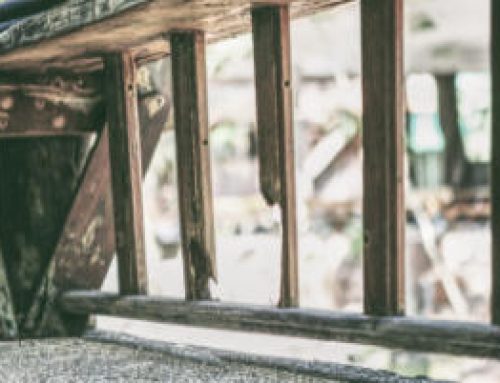The dynamic nature of a construction site is characterized by the presence of combustible materials, electrical installations, and various hot work activities. This underscores the need for a proactive and vigilant approach to mitigate fire risks. In this post, we’ll look at why fires happen on construction or renovation sites and offer tips on how to prevent them.
What Can Cause a Fire in a Building Under Renovation or Construction?
Fires on construction sites can result from a variety of factors including the following:
Electrical Faults
Electrical systems may be overloaded or improperly installed, leading to short circuits or electrical fires. Qualified electricians should oversee wiring and electrical components to ensure compliance with safety codes and standards.
Hot Work Activities
Welding, cutting, and soldering can generate sparks that could ignite flammable materials including dust, insulation, or construction debris. Fire-resistant barriers, fire watches and a thorough assessment of the work area should be employed prior to initiating hot work.
Inadequate Fire Prevention Measures
The absence of fire extinguishers, emergency exits, or properly installed fire alarm systems can contribute to fire escalation. Regular inspections, adherence to safety regulations, and comprehensive emergency response plans are vital in minimizing the impact of potential fires. A robust fire safety program should educate workers on fire prevention, evacuation procedures, and the correct usage of firefighting equipment.
Faulty Equipment and Machinery
Malfunctioning tools or equipment with damaged cords can ignite fires. Regular maintenance, equipment inspections, and prompt replacement of damaged components are practices to prevent such incidents. Workers should be trained in safety protocols to ensure all machinery meets industry standards.
Accumulation of Combustible Materials
Construction sites often accumulate wood, insulation, and other construction-related materials. Leaving these near ignition sources can significantly increase fire risk. Emphasize the importance of proper labeling on storage containers, indicating the type of material, potential hazards, and emergency contact information. Look for leaks, damage, or improper storage practices. Regular cleanups and proper storage away from potential fire hazards are also fundamental preventive measures.
Careless Smoking
Workers may not be prevented from smoking on the job site, but it only takes one carelessly discarded cigarette to ignite a fire. Designate smoking areas away from the main construction site.
Arson
Construction or renovation sites can be targets for deliberate acts of vandalism or arson, and can even be caused by disgruntled workers. Implement security measures such as fencing, surveillance cameras, and on-site personnel to deter unauthorized access.
Related: Fire safety tips for construction sites.
Fire Prevention Protocols
Prior to commencing any project, planning for fire prevention measures at buildings under renovation or construction is top priority. Supervisors should conduct a thorough risk assessment to identify potential fire hazards and design a fire prevention strategy tailored to the specific site.
Fire Safety Program
Create a program encompassing regular training sessions for all personnel on fire prevention measures, emergency response protocols, and the proper use of firefighting equipment, along with the importance of maintaining a clean and organized workspace.
Fire Protection Systems
The construction site should be equipped with an adequate number of fire extinguishers strategically placed throughout the premises. They should be regularly inspected and maintained. Fire alarms, smoke detectors, and emergency lighting systems can help provide early detection and swift response in case of a fire.
Site Management
Establish designated areas for welding, cutting, and other hot work processes. Ensure they are well ventilated and equipped with fire-resistant barriers. Implement a stringent permit system for hot work, requiring thorough assessments of the work area before authorization. Designate trained personnel as fire watchers during hot work activities.
Fire-Resistant Materials
Utilize fire-retardant coatings, insulation, and other materials that comply with industry standards.
Effective Housekeeping
Regularly remove combustible debris and materials from the construction site and keep them at a safe distance from potential ignition sources. Encourage cleanliness and organization among workers.
Security System
Establish a robust security system to deter potential arson or vandalism. Install fencing around the construction site, utilize surveillance cameras, and consider on-site security personnel.
The Role of a Forensic Inspector in Identifying Fire Hazards on Construction Sites
A forensic inspector, like Forst Consulting Group, can help identify and mitigate fire hazards at a building under renovation or on a construction site and aid in enhancing overall safety.
Skilled in conducting examinations of construction sites, forensic inspectors can identify factors that might contribute to fire hazards. They assess electrical systems, wiring, and equipment installations to ensure compliance with safety codes and standards. They can also evaluate the procedures and safety measures in place for hot work, ensuring that proper protocols are followed.
Additionally, forensic inspectors can scrutinize the storage and handling of combustible materials, inspect tools and machinery, and help to determine the cause and origin of a fire. Understanding why a fire occurred can provide insights to prevent similar incidents in the future.
Our key offerings at Forst Consulting Group include comprehensive risk assessments. Our experienced consultants can conduct thorough evaluations of construction sites to identify potential fire hazards and provide detailed reports of our findings to empower project managers.
The proactive implementation of fire prevention measures ensures the safety and success of construction or renovation projects. By prioritizing regular inspections, adhering to stringent safety protocols, and promoting a culture of vigilance among personnel, the risks associated with fire hazards can be significantly minimized.
Fire prevention is not merely a regulatory requirement. It is a fundamental responsibility to protect lives, property, and the project’s overall success.
Please contact Forst Consulting Group to learn more about our consulting and inspection services.
Photo credit: San Francisco Chronicle


